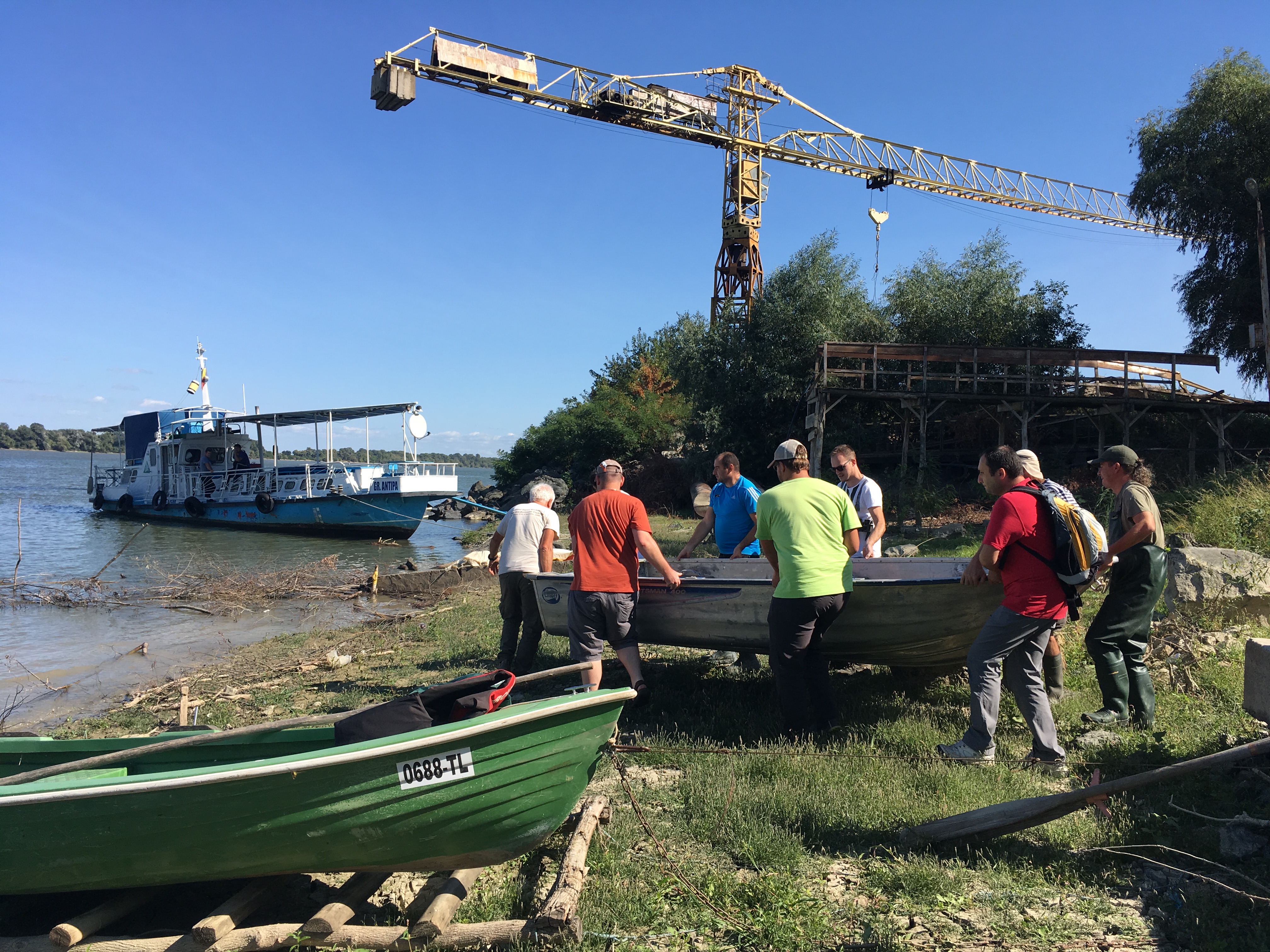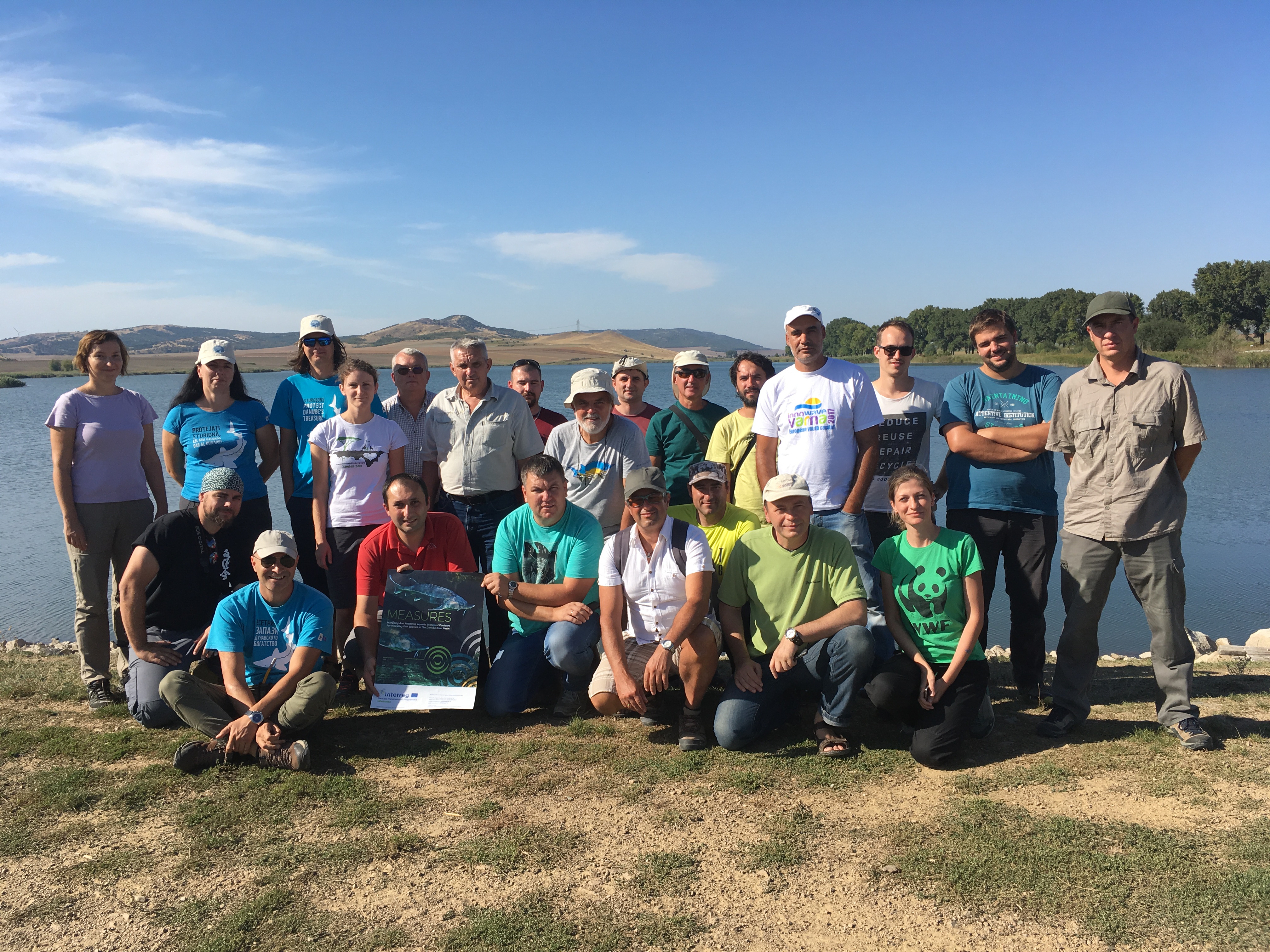MEASURES - Training workshop on assessment of migratory fish habitat and behavior
28-09-2018
Experts from seven Eastern European countries gathered in Tulcea from 17 to 22 September, in the framework of a course supported by specialists from the Danube Delta National Institute for Research and Development. The purpose of the six days was to exchange experience(s) and share good practices along the Danube and its tributaries, in order to better study and understand sturgeons, the emblem species of this river.
How do we identify sturgeon species?
 The first day dealt with theoretical information; aspects related to the identification of each species of the six sturgeons, physical characteristics both with the help of the images and the films made in the framework of complementary projects, were discussed. Also, information on how sturgeon habitats can be identified were presented, whether we are talking about GPS navigation systems, bathymetric maps, or online tools such as Google Earth. For a better understanding of these sturgeon-friendly areas, the Institute's experts expressed the morphological importance of the bottom of the water for sturgeon life, whether we are talking about areas of movement including wintering, parking, resting or reproduction. But being in the middle of the Danube, beyond the measurements we can make with the help of high tech, how can we figure out what we actually have on the bottom of the riverbed? And in this respect, the institute came up with a series of proposals for all budgets and needs, however the one that drew the most attention was the idea of a simple tool, developed in Tulcea, with which you can find out whether the area underneath your location consist of stones, sand, gravel or other materials.
The first day dealt with theoretical information; aspects related to the identification of each species of the six sturgeons, physical characteristics both with the help of the images and the films made in the framework of complementary projects, were discussed. Also, information on how sturgeon habitats can be identified were presented, whether we are talking about GPS navigation systems, bathymetric maps, or online tools such as Google Earth. For a better understanding of these sturgeon-friendly areas, the Institute's experts expressed the morphological importance of the bottom of the water for sturgeon life, whether we are talking about areas of movement including wintering, parking, resting or reproduction. But being in the middle of the Danube, beyond the measurements we can make with the help of high tech, how can we figure out what we actually have on the bottom of the riverbed? And in this respect, the institute came up with a series of proposals for all budgets and needs, however the one that drew the most attention was the idea of a simple tool, developed in Tulcea, with which you can find out whether the area underneath your location consist of stones, sand, gravel or other materials.
Implementation of methods and tools discussed
 The second day was the day we filled in the information on the morphological identification of sturgeon habitats by means of a multi-beam sonar, which helped develop 3D bathymetric surveys of the areas concerned. The last discussion before going to the field was linked to the hydraulic measurements on sturgeon spawning / wintering habitats, namely measuring / verifying water flow direction and speed at potential spawning and wintering habitats for sturgeons. The second part of the day was designed for implementing all the methods and using the tools we talked about in the two days. The field visit was carried out in Isaccea, where DDNI carries out some of its research work in the lower Danube.
The second day was the day we filled in the information on the morphological identification of sturgeon habitats by means of a multi-beam sonar, which helped develop 3D bathymetric surveys of the areas concerned. The last discussion before going to the field was linked to the hydraulic measurements on sturgeon spawning / wintering habitats, namely measuring / verifying water flow direction and speed at potential spawning and wintering habitats for sturgeons. The second part of the day was designed for implementing all the methods and using the tools we talked about in the two days. The field visit was carried out in Isaccea, where DDNI carries out some of its research work in the lower Danube.
The third day was assigned for catching eggs and larvae of benthic fish with D-shaped drift net or how pelagic eggs and larvae of shads are captured, respectively. This aspect was also exemplified both theoretically and practically in Isaccea.
The fourth day was about sampling and tagging YOY sturgeons through concrete examples of what it means and how this method was used by the institutor’s experts throughout their work. The fifth day was the day when each participant managed to put into practice these methods at the Horia farm. In addition, everyone had the opportunity to see and practice implanting acoustic transmitters under the guidance of specialists.
Reflections and lessons drawn
 The last day was the day for exchanging impressions, sharing experiences from other countries that were present in the course, and in this instance, cases from Georgia and Slovakia were presented. Also included on this day were the next steps each partner will do were discussed, how they will implement the knowledge accumulated at national level and how DDNI or other experts will be able to support them in achieving the goals. The day ended with a beautiful visit to the Danube Delta Natural History Museum, where all the experts could meet the King of the Danube, the beluga sturgeon.
The last day was the day for exchanging impressions, sharing experiences from other countries that were present in the course, and in this instance, cases from Georgia and Slovakia were presented. Also included on this day were the next steps each partner will do were discussed, how they will implement the knowledge accumulated at national level and how DDNI or other experts will be able to support them in achieving the goals. The day ended with a beautiful visit to the Danube Delta Natural History Museum, where all the experts could meet the King of the Danube, the beluga sturgeon.
The event was a success that will make its results felt with the multiplication of examples in Romania along the middle Danube and its tributaries, where the sturgeons still live.
